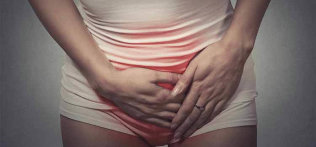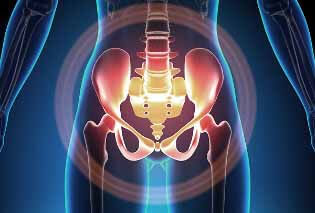
When it comes to varicose veins, few people associate this disease with internal organs. Lower extremity pathology is more often associated with this. Meanwhile, the proportion of varicose veins of the pelvic veins, which are not visible to the naked eye, makes up at least 5% of the total share of vascular diseases, and most patients accidentally find out about the diagnosis.
This form of the disease mainly affects women of childbearing age. They have dilated pelvic veins accompanied by symptoms similar to gynecological inflammations, consequences of hormonal disorders and pathologies of the genitourinary system. Due to that, the disease has not been treated for a long time and continues to progress, which leads to serious complications, including life-threatening ones.
Causes and risk factors
Under the varicose veins of the pelvic organs in women, doctors understand the change in the structure of the vascular walls characteristic of other types of disease - weakening followed by stretching and the creation of "pockets" within which blood stagnates. Cases where only the vessels of the pelvic organs are affected are extremely rare. In about 80% of patients, with this form, there are signs of varicose veins of the inguinal veins and veins of the lower extremities.
The incidence of varicose veins of the small pelvis is most pronounced in women. This is due to anatomical and physiological characteristics that indicate a tendency to weaken the venous walls:
- hormonal fluctuations, including those associated with the menstrual cycle and pregnancy;
- increased pressure in the small pelvis, which is typical for pregnancy;
- periods of more active filling of veins with blood, including cyclic menstruation, during pregnancy, as well as during sex.
All of the above phenomena belong to the category of factors that cause varicose veins. And they are found exclusively in women. Most patients are faced with varicose veins of the small pelvis during pregnancy, because there is a simultaneous indulgence of provoking factors. According to statistics, in men, varicose veins of the small pelvis are 7 times less common than in the fairer sex. Their range of provoking factors is more diverse:
- hypodynamics - long-term preservation of low physical activity;
- increased physical activity, especially pulling weights;
- obesity;
- lack of fiber in the diet;
- inflammatory processes in the organs of the genitourinary system;
- sexual dysfunction or lucid refusal of sex.
Genetic predisposition can also lead to pathology of the plexuses located inside the small pelvis. According to statistics, varicose veins of the perineum and pelvic organs are most often diagnosed in women whose relatives have suffered from this disease. The first changes in them can be noticed in adolescence during puberty.
The greatest risk of developing inguinal varicose veins in women with affected pelvic pelvises is seen in patients with venous pathologies in other parts of the body. In this case, we are talking about congenital venous weakness.

Typical symptoms
In women, varicose veins of the pelvis are accompanied by severe but nonspecific symptoms. Manifestations of this disease are often considered signs of gynecological disorders. The main clinical symptoms of varicose veins in the groin in women with affected pelvic vessels are:
- Pain in the lower abdomen unrelated to the menstrual cycle. Their intensity depends on the degree of damage to the veins and the extent of the process. Grade 1 varicose veins of the small pelvis are characterized by periodic mild pain that spreads to the lower back. In the later stages it is felt in the abdomen, perineum and lower back and is long and intense.
- Abundant discharge from mucous membranes. The so-called leukorrhea does not have an unpleasant odor, does not change color, which would indicate an infection. The amount of discharge increases in the second phase of the cycle.
- Increased symptoms of premenstrual syndrome and dysmenorrhea. Even before the onset of menstruation, the pain in women increases, until the onset of difficulty walking. During menstrual bleeding, it can become unbearable, spreading to the entire pelvic area, perineum, lower back, and even the thighs.
Another characteristic sign of varicose veins in the groin in women is discomfort during sexual intercourse. It is felt in the vulva and vagina and is characterized as dull pain. It can be observed at the end of the relationship. In addition, the disease is accompanied by increased anxiety, irritability and mood swings.
As with varicose veins of the pelvis in men, the female part of patients with such a diagnosis gradually loses interest in sex. The cause of dysfunction is both constant discomfort and decreased production of sex hormones. In some cases, infertility can occur.
How are varicose veins of the pelvis treated?
If women have symptoms of pelvic varicose veins, treatment should be started as early as possible. The main direction of therapy is to restore vascular tone, strengthen their walls and improve blood flow in the pelvic area.
For pelvic varicose veins, treatment is prescribed and supervised by a phlebologist. If varicose veins of the pelvis are found in women during pregnancy, a phlebologist and gynecologist are involved in the treatment.
Disease therapy requires an integrated approach. It contains several treatments:
- Conservative influence. It consists of regular and long-term medications. Using this method, you can cure varicose veins of the pelvis at an early stage, when the veins have partially lost tone.
- Drug-free therapy. It consists of adhering to a daily routine, exercising. The method is considered helpful, although it depends on reducing the risk of further progression of varicose veins.
- Surgical treatment. It is used when other methods are ineffective, as well as when the disease is detected in later stages.
Drug therapy involves taking several groups of drugs that can not only eliminate unpleasant symptoms, but also improve the condition of the veins:
- Venotonics, which are designed to improve venous outflow;
- A drug that reduces blood density and is prescribed to prevent thrombosis;
- Complex medicine to reduce unpleasant symptoms and strengthen blood vessels;
- An herbal preparation designed to reduce edema, eliminate inflammation;
- Complex with vitamins designed to strengthen venous walls.
Almost all venotonic drugs for varicose veins of the pelvis are not recommended to be taken during pregnancy. If symptoms progress, your doctor may prescribe them in minimal doses from the 12th week of pregnancy.
Surgery for varicose veins in the pelvic organs is considered the ultimate refuge. It is used in the absence of positive dynamics during long-term use of drugs. The methods of surgical treatment used may differ depending on the location of the blood vessels damaged by the disease:
- if only the internal veins are affected, the ovarian vein is ligated;
- by combining varicose veins of the pelvic organs with varicose veins of the perineum, the surgeon performs ligation of the vena cava;
- with a combination of varicose veins in the small pelvis and lower extremities, a crosssectomy is performed.
Before and after the intervention, women should undergo a course of drug therapy, wear compression garments, and follow a strict weight loss diet.
Prevention
Preventing deterioration and reducing the risk of progression is just as important as therapeutic measures. It includes exercise for varicose veins of the pelvis and adherence to a special diet. With their help it is possible to:
- to reduce weight, ie to reduce the load on blood vessels;
- improve blood flow;
- reduces the likelihood of blood clots;
- reduces the risk of other complications.

In the set of exercises for varicose veins of the small pelvis, you can include the classic "Birch" and "Scissors with feet", "Bicycle" and lifting on the toes from a standing position. Such loads stimulate the outflow of blood from the small pelvis, strengthen the muscles of the pelvic floor, which helps reduce the swelling of the veins. It is necessary to perform gymnastics regularly for varicose veins of the small pelvis, preferably every day, morning and evening.
The peculiarities of the diet in varicose veins of the pelvis consist in the inclusion in the diet of foods rich in fiber and vitamins (mainly B, A, C, Omega-3 and Omega-6). Fiber is necessary to improve bowel function and remove congestion in the abdominal and pelvic organs. Vitamins are necessary to strengthen the walls of the veins, to reduce the viscosity of the blood. To meet their needs, the diet includes:
- whole grain cereals - buckwheat, brown rice, millet, oats;
- vegetables and fruits, berries and fruits, citrus fruits; skinless chicken or turkey fillets;
- seafood, white and red fish, algae;
- green tea, fresh juices, compotes.
It is necessary to eat broken, giving preference to cooked, stewed and baked dishes, fresh vegetable salads.
Complications
Unlike varicose veins on the legs, the list of situations in which varicose veins of the pelvis are dangerous in women includes a number of negative consequences. In addition to thrombosis, thromboembolism, thrombophlebitis and other exclusively vascular complications, in the background of the disease may occur:
- chronic inflammatory processes of the genitourinary system;
- hormonal disorders;
- dysfunctional uterine bleeding;
- infertility.
This is not the only danger of varicose pelvic veins. Because the disease often worsens during pregnancy, it threatens not only the woman but also the fetus. The main complication of this form of varicose veins, which progresses in the background of pregnancy, is the delay in the development of the fetus. Women with this diagnosis are more likely to give birth to a premature baby of low weight, underdeveloped lungs, etc.
During childbirth, with varicose veins in the groin, the vessel walls may rupture. This is fraught with profuse blood loss and can sometimes lead to sad consequences. To reduce the risk of such a complication, doctors prescribe a cesarean section accompanied by vein ligation to women with varicose pelvis.























